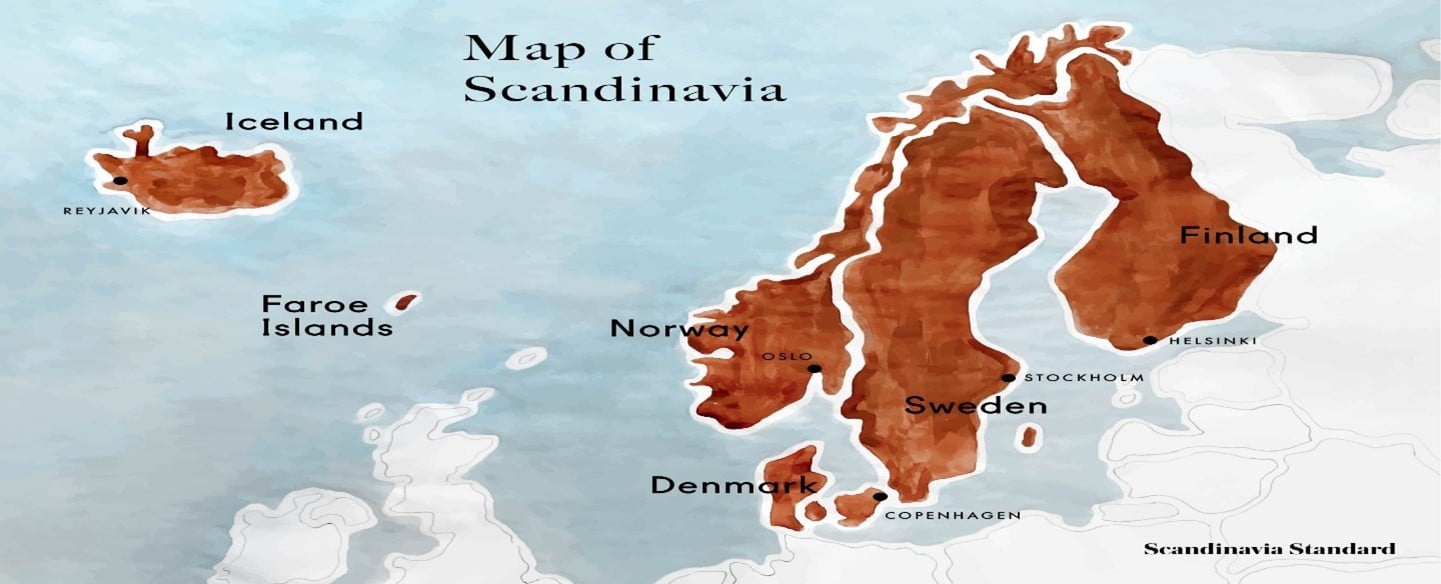International Relations
Context: In recent Sweden elections, the Social Democrats a party with origins in the neo-Nazi movement conceded defeat even as Moderates are expected to form the government with other right-wing parties offering support.
- This shows a declining popularity of the Nordic model, or “democratic socialism”, as advocated by the new Green Movement and U.S. Senator Bernie Sanders, in the Nordic countries themselves.

Socialism and social democracy in Scandinavian:
- Terming the political-economic system in the Scandinavian countries, despite its strong welfarist basis and emphasis on collective bargaining as “socialist” would be a misnomer.
- For one, the term “socialism” is associated with the regimes of the erstwhile Communist bloc, which had a heavy preponderance of the state in not just the ownership of the major means of production but also in political life with a one-party system drawing its ideological basis for rule on behalf of the working class.
- Following the collapse of the Soviet Union, new socialist regimes in recent years have sought to distance themselves from the one-party model in the so-called “second world”, instead focusing on retaining the functioning of market economies, while emphasising redistribution of wealth and a greater preponderance for the state in this process.
- The regimes in Latin America led by ruling parties in Venezuela, Bolivia and recently in Chile, can be termed “democratic socialist” — seeking to achieve socialist goals of redistribution and restructuring of formal democratic and liberal institutions in vastly unequal and elite driven systems.
- Political circles began to associate social democracy with Keynesianism, the Nordic model, the social-liberal paradigm, as well as welfare states in the late 20th century.
Defining features:
- Within socialism, social democracy is a left-wing political, social, and economic theory that promotes political and economic democracy. It is defined as a policy regime that supports economic and social interventions to advance social justice inside the framework of a liberal-democratic polity and a mixed economy that is capitalist-oriented.
- A dedication to representative and participatory democracy
- mechanisms for income redistribution
- management of the economy in the public interest
- social welfare policies
The ‘exceptional’ Scandinavian model
- In the Scandinavian countries, on the other hand, the systems are more akin to typical “social democracies” —
- reliance on representative and participatory democratic institutions where separation of powers is ensured;
- a comprehensive social welfare schema with emphasis on publicly provided social services and investment in child care, education, and research among others, that are funded by progressive taxation;
- presence of strong labour market institutions with active labour unions and employer associations which allow for significant collective bargaining, wage negotiations and coordination besides an active role in governance and policy.
- All these countries also follow a capitalist model of development, allowing for entrepreneurism and funding of welfare policies through a large degree of wage taxation in relation to corporate taxes.
Success of the Nordic countries:
- The commonalities in the Scandinavian countries — Norway, Sweden, Denmark, Finland, and Iceland — on many of these counts are measurable.
- For example, among countries in the Organisation for Economic Cooperation and Development (OECD) (featuring most high-income countries in the world), Iceland, Denmark, Sweden, Finland, and Norway have the highest proportion of the workforce belonging to trade unions.
- Education is free in all the Nordic States; health care is free in Denmark and Finland and partially free in Norway, Sweden, and Iceland ;
- workers get several benefits — from unemployment insurance to old age pensions, besides effective child care. Therefore, labour participation rates in these countries are among the highest in the world (even among women).
- The five Nordic nations rank in the top 10 among OECD countries in government expenditure on health and education if calculated as percentage of GDP.
- India can take a cue from the Nordic model since the State needs to find employment for its youth as well as provide welfare support to its vast section of vulnerable population.
Way Forward:
- One key reason for the thriving social democratic model in the Nordic countries has been their relatively smaller and more homogenous populations enabling focused governance.
- The “corporatist” model of involving interests of both capital and labour, mediated by the government at many levels, has allowed these countries to transition from agrarian to industrial to post-industrial (in some cases) and knowledge/service economies relatively smoothly.
- Thus, the Nordic model of social democracy offers lessons to the developing world, including countries like India despite the myriad complexities of diversities, differential internal development, and histories.
Source: The Hindu













